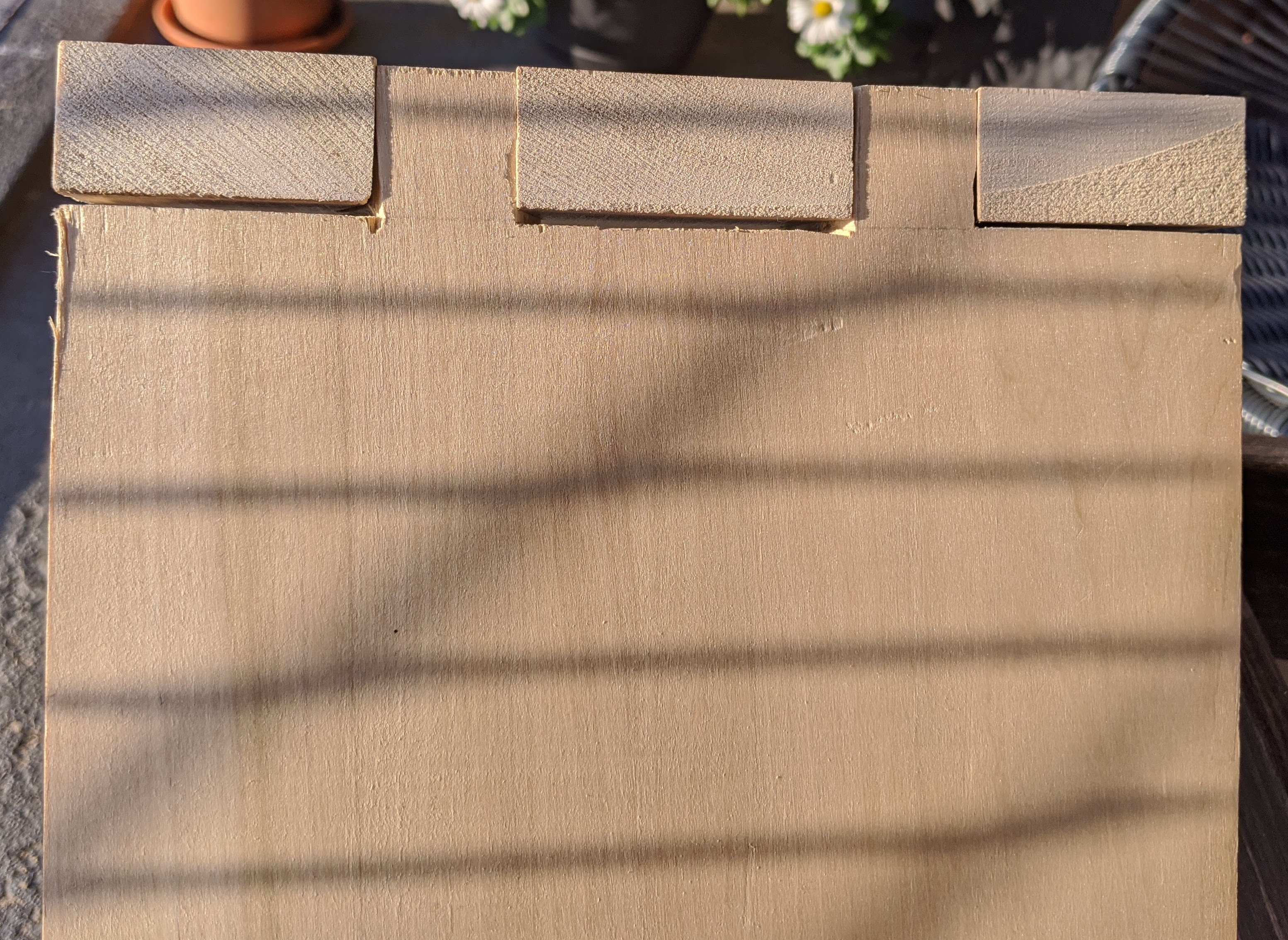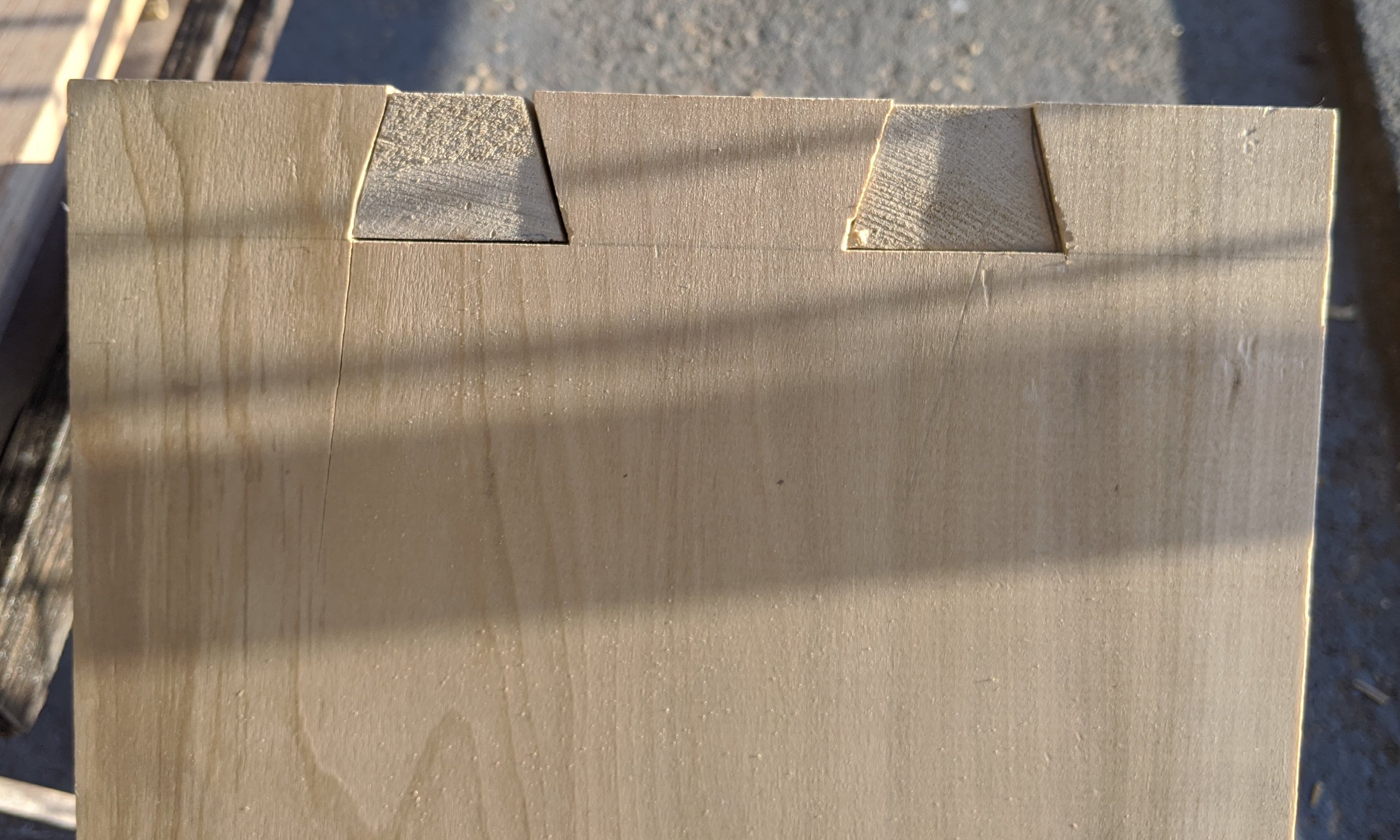This is going to be a guide by a beginner, but hopefully this will be useful to those with even less experience than me. When I decided to start building furniture, most of the internet basically said, “unless you have $5000 in tools and a large workshop you may as well just get Ikea furniture.” My aim is to clarify that if you want furniture perfect in every way and have a large budget then sure buy a ton of great tools, but if you’re cool with compromises there are ways to get it done on the cheap.
This is the guide I used to get started. For measuring, I just used a combination of paper that I cut, a pencil, and my old protractor from high school geometry. It was a kludge but the results were okay. I also recommend watching this video to understand a bit better how dovetails are cut. My only other advice is that you want to flatten the wood. I had the guy at the lumber yard do it for me but YMMV.
What motivated me to start making furniture was
- I have lots of time and not a lot of money now that I’m unemployed
- I need furniture
- I absolutely hate furniture that doesn’t feel sturdy
- I needed a hobby
I decided my first piece would be a table for my entryway. Since it’s super narrow I figured I’d make it 8 inches wide, with legs attached by dovetails. I wanted something that used wood joinery as opposed to just screws because it feels better. Joinery has the potential to be stronger and besides it felt like investing in developing new skills, as opposed to slapping something together.
Unfortunately, if you listen to the internet, you need at least 5 kinds of saws, 15 chisels, 3 planes, etc. I found this difficult to believe since people have been working with wood for millennia. Here’s what my minimum gear list looks like for creating serviceable dovetails
- Dovetail saw - $30
- A good chisel set with ¼, ½, ¾, 1 inch chisels - ~$14 per chisel
- Coping saw - $13
- Sandpaper for sharpening chisels - $5
From what I remember the wood cost around $50. All in all, this came in way cheaper than if I bought it. If you factor in the time I spent on it though, I think unless you’re unemployed you should stick to just buying furniture. At least from a value perspective buying is better, although I will definitely make myself some chairs soon because I enjoyed working with wood.
You absolutely need the dovetail saw and at absolute minimum 2 chisels. I’d probably choose ¾ and ¼ inch chisels, although having the set of 4 was fantastic. The chisels are used for chipping away at the baselines of the dovetails.
The dovetail saw is essential because it allows you to cut the dovetails out. Don’t try to use a regular saw you got at Home Depot. The dovetail saw I used was a Dozuki, which I mainly chose because of price. There is a debate between Western vs Japanese saws, which is irrelevant to me mainly because the Japanese saw was so much cheaper.
There are two kinds of saw (mainly), crosscut and rip cut. The difference is that for rip cutting you go along the grain and crosscut goes across. You can try to use the wrong kind of saw for a cut. It seems to work, it’s just very slow and very ugly. Would not recommend it at all. The dovetail saw has rip teeth. I recommend getting a crosscut saw as well. I didn’t and I think that was a mistake. I used the coping saw for crosscutting tasks and didn’t turn out great.
The coping saw is mostly so you don’t spend forever chiselling away. It’s not essential, but seeing how I have been annoying my neighbors with chiselling, I figured I should at least minimize the noise by using the coping saw as much as I can. I used the coping saw to get in between the teeth to cut out the waste. It’s used mostly for making curved cuts, since the blade is so thin you can change direction very easily.
I used the sandpaper to sharpen the chisels. I recommend the (Scary Sharp method)[https://www.instructables.com/Scary-Sharp-on-a-Budget/]. This is essential since I could really feel when the chisels started getting dull.
These is what the second dovetail I ever made looked like. Overall not bad for the budget I had.


I think in general the bottleneck was my lack of a workbench. I mostly propped up the wood on various surfaces as required and was very gentle. I don’t think I’d recommend this, but if you’re careful enough it can be okay. I used a pocket knife and the chisels to get started on saw cuts so the blade wouldn’t slip. I also was very careful to never put my hands downstream of the chisels.
What I learned
- You don’t need a ton of tools when starting a new hobby
- Furniture is mostly expensive due to labor cost
- You can usually get around budget and space limitations